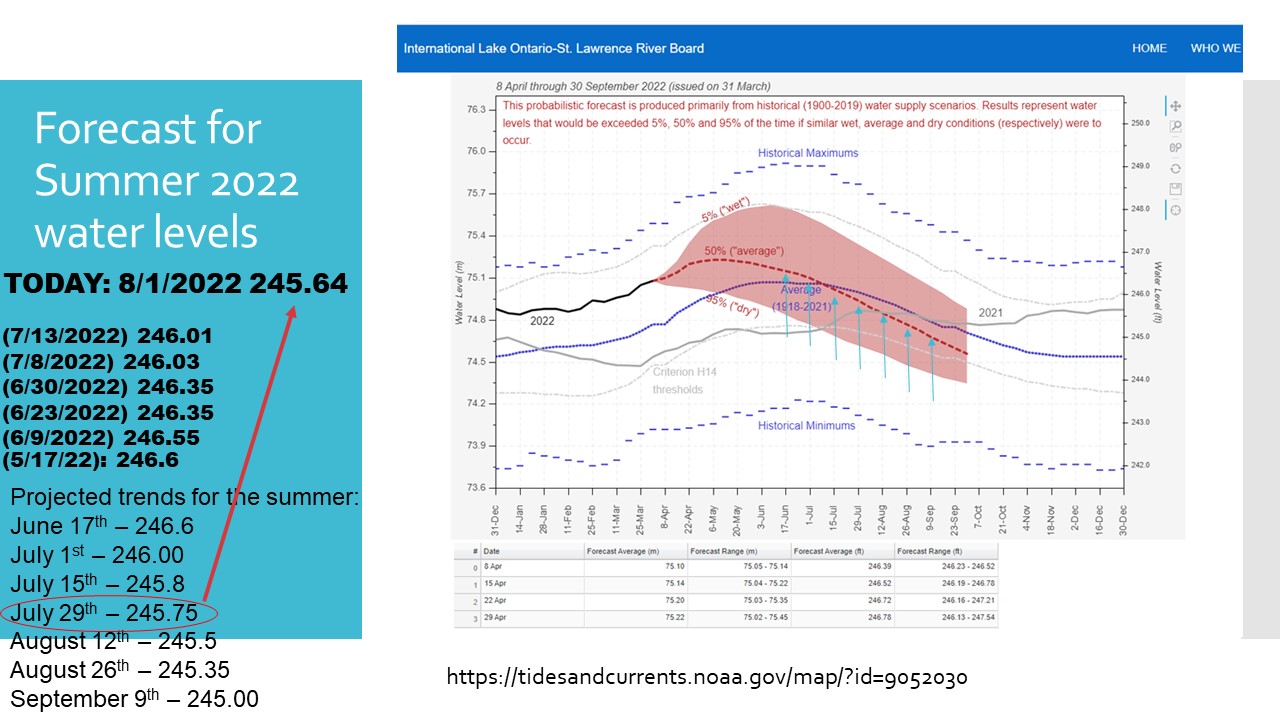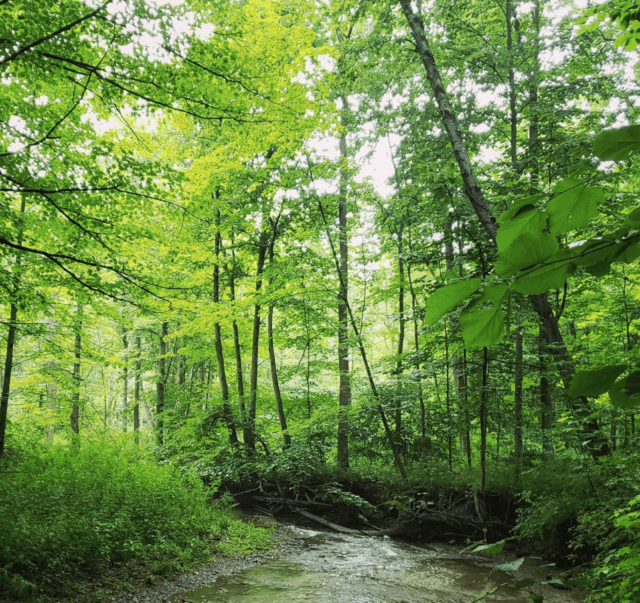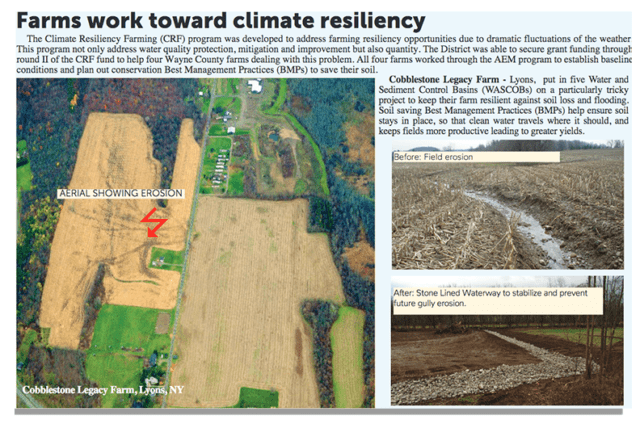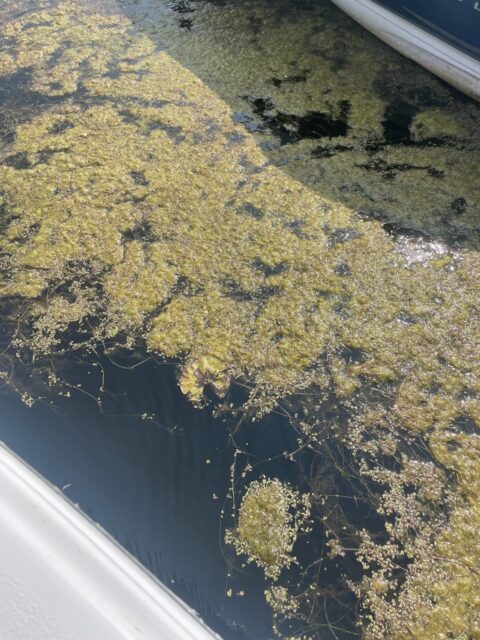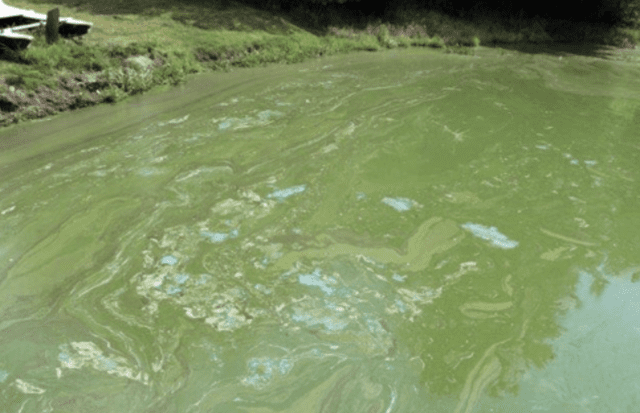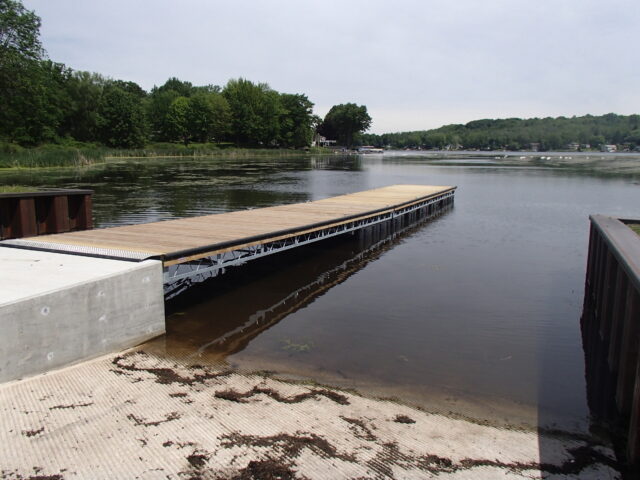
New York State Fishing Access Site’s new floating dock system at Port Bay South, June 2022
Water Quality continues to be a concern due to changing weather, and temperatures, through watershed management. Throughout the summer of 2022 until Columbus Day, District staff will be reviewing water quality and positing updates if there are specific concerns on the waterfronts and how to manage them throughout Wayne County. Watersheds are the entire area that supplies water to a waterbody. This can potentially make up 1000s of acres of land with various topography, and use. Water quality update reports will include descriptions based on weather patterns, temperature, what you are seeing in the water, invasive species and local water quality projects.
The District monitors water quality across Wayne County throughout the year and tried to address targeted issues that have been brought up by the communities. One of the positives from the COVID response was the District’s Landowner Assistance Program (LAP forms) and Municipal Assistance Program (MAP forms) that are available online to help target and narrow down issues. This form is fillable and allows the landowner or municipal leader to upload a request and photos in real time from our Website.
This report allows us to see where review is needed. The LAP/MAP program is for technical review by trained technicians. It is not a grant program. The District staff will review the site through technical maps, permitting needs and water quality considerations and then will follow up with the requestor by email or by phone depending on the initial review findings. On a rare case, there may be a request for an on-site visit. This process may take 2-3 weeks depending on the amount of requests that come in at once.
The District’s Technical Staff is made up of 5 people that have made community water quality their professional career. They focus on the “bigger picture” of watershed management while working to address the water quality impacts of the local community.

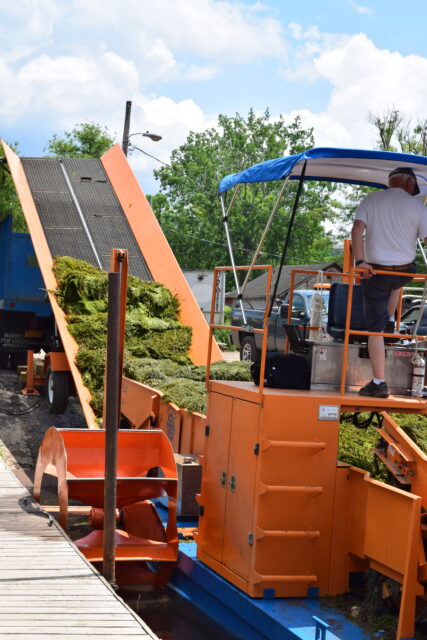 Aquatic Vegetation Control (AVC) is a form of nutrient management that is one of several management techniques used to manage non-point source water pollution that is natural but also impacts a balanced ecosystem for water quality. Selective harvesting invasive species and some high concentrations of water weeds verses letting them die off and fertilize seedbeds within a waterbody does three things for the environment:
Aquatic Vegetation Control (AVC) is a form of nutrient management that is one of several management techniques used to manage non-point source water pollution that is natural but also impacts a balanced ecosystem for water quality. Selective harvesting invasive species and some high concentrations of water weeds verses letting them die off and fertilize seedbeds within a waterbody does three things for the environment: